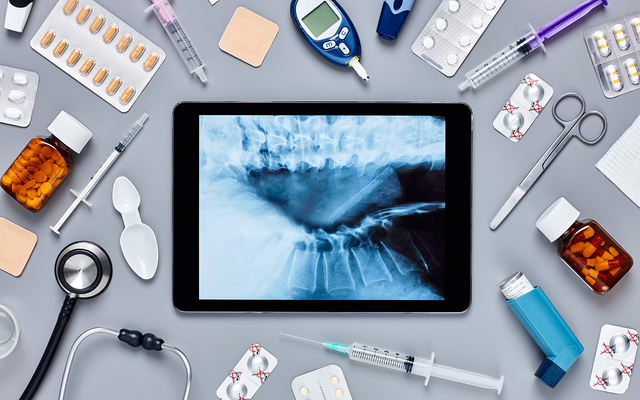August 15, 2019
EU MDR Compliance: The new European device regulation will bring about impactful change. It is designed to do so.
Since the 1990s, medical device regulation in Europe has been relatively unchanged. The EU was considered a valued testing ground for medical device technology throughout the early 2000s.
However, several high-profile incidents around 2010 highlighted the urgent need to improve standards, processes, and procedures among EU device regulators.
These events acted as catalysts for reform. After several years of negotiating and planning, in 2017, the EU passed the regulatory and compliance structure to regulate of medical devices (EU MDR) and in-vitro diagnostics (EU IVDR).
Impetus for Change
In 2010, a scandal rocked the medical device world. Metal-on-metal (MoM) hip implants were found to wear down, leading to metal particles entering the bloodstream and soft tissues. These MoM devices were seen to have high failure rates and were recalled.
FDA notes that over time, these metal particles can cause damage to the bone or tissue surrounding the implant and joint, leading to pain, implant loosening, device failure, and lasting damage to bone muscle and nerves.
The scandal unveiled a failure of FDA’s device oversight and post-market surveillance—and that failure had a global effect.
Around the same time, the PIP breast implant debacle erupted. In 2009, surgeons began reporting an unexpectedly high number of ruptured breast implants. The devices were linked to a French firm Poly Implant Prothese (PIP), which had produced silicone breast implants with an “in-house formula” that used industrial-grade silicone since 2001.
By 2013, the company had been bankrupt, liquidated, and the founder was sent to prison. However, poor record-keeping meant that women were often unable to determine whether they had received these implants.
Following the scandal, the European Commission determined its regulations had not kept pace with technology and science innovations. The group worked to develop regulations that would extend medical device regulation to increase compliance requirements to ensure patient safety.
Furthermore, the regulations create a national registry for manufacturers and devices to guarantee traceability through unique device identification. They also increase transparency along the entire supply chain.
Further, they establish a portal for manufacturers to report serious adverse events and corrective actions. They are increasing the rights and responsibilities of Notified Bodies to monitor all medical devices.
EU MDR Compliance Objectives
Although the compliance cost will most likely be high, the new regulations are intended to prevent long-term deviations, like the PIP breast implant scandal.
The new EU MDR regulation creates a new and improved landscape for the medical devices industry, with the following new guidelines, according to Deloitte’s report, “Preparing for the future: The new European Union medical devices regulation.”
- All medical devices must undergo an independent assessment of safety and performance before being marketed in the EU.
- There will be greater transparency of information on the benefits for patients, residual risks, and a thorough assessment of the risk/benefit ratio will be necessary.
- There will be more transparent rules to enable standardization and support simpler and less complex trading between EU member states; those that do not comply will be penalized.
- The new rules support patient-oriented innovation and take particular account of the specific needs of the many small and medium-sized manufacturers in this sector.
- The EU MDR will place further responsibilities on “Notified Bodies”—those independent third parties that perform conformity assessments for medium and high-risk devices. The Notified Bodies will be subject to heightened scrutiny from competent authorities. They will need to be designated under the EU MDR, with designation coordinated at a European level.
Better Living Through Technology
To meet the new EU MDR compliance vision, organizations will need to take a structured and well-managed approach to assess product portfolios and upgrade quality systems. Medical device houses should be building a robust business and strong project management capabilities with effective cross-functional stakeholder management.
Doing so requires increasing reliance on enterprise quality and compliance management technology.
For example, the regulation requires shifting from several quality management systems (QMS) to one overarching QMS implemented systematically throughout the life cycle.
Upgrading quality systems to the new regulatory environment may require significant investment. As well as increased senior management involvement in both the upgrade process and ongoing management of the QMS.
This will involve a multilevel approach: high-level impact assessment, planning, implementation, organizational alignment, and communication and benefits realization. Putting such systems in place provides an opportunity to go beyond compliance and decide on a company’s current product portfolio.
Conclusion
The impact of EU MDR/IVDR regulation will dramatically alter the operations of medical device manufacturers. Even impact the composition of their existing as well as future portfolios.
The focus on transparency and the exchange of data makes conforming to these new regulations a challenge. Medical device manufacturers will need to start eliminating silos and implementing technology that provides an unbroken chain of data for better visibility.
C-suite leadership must be fully aware of and support the changes the EU MDR compliance will necessitate. When approached strategically, EU MDR/IVDR implementation can harness technology to improve medical devices’ safety and efficacy.
 |
Heather Thompson has written about the medical device industry for 15 years. She has served as the editor-in-chief for MD+DI, and the senior editor for Medical Design and Outsourcing. |


